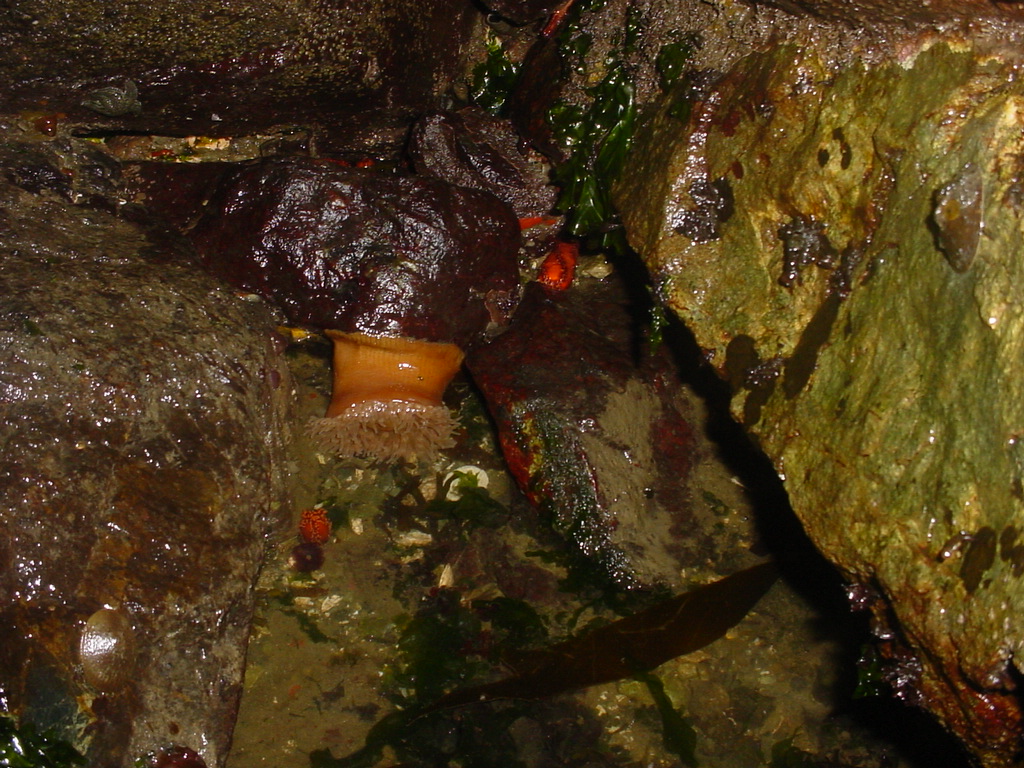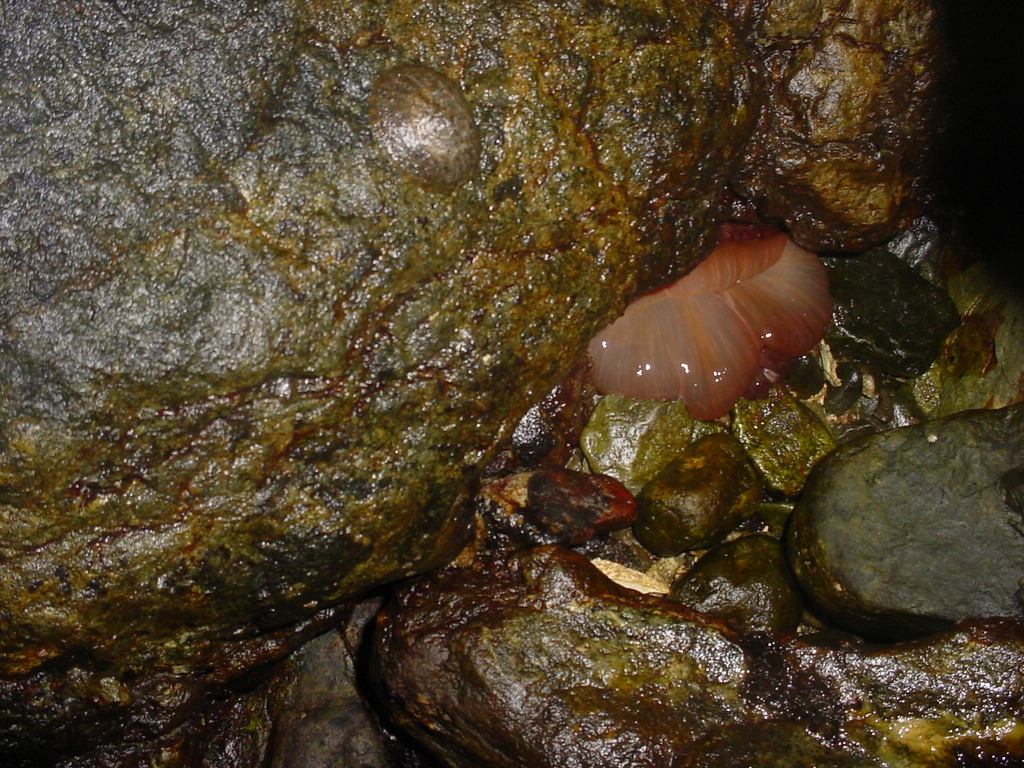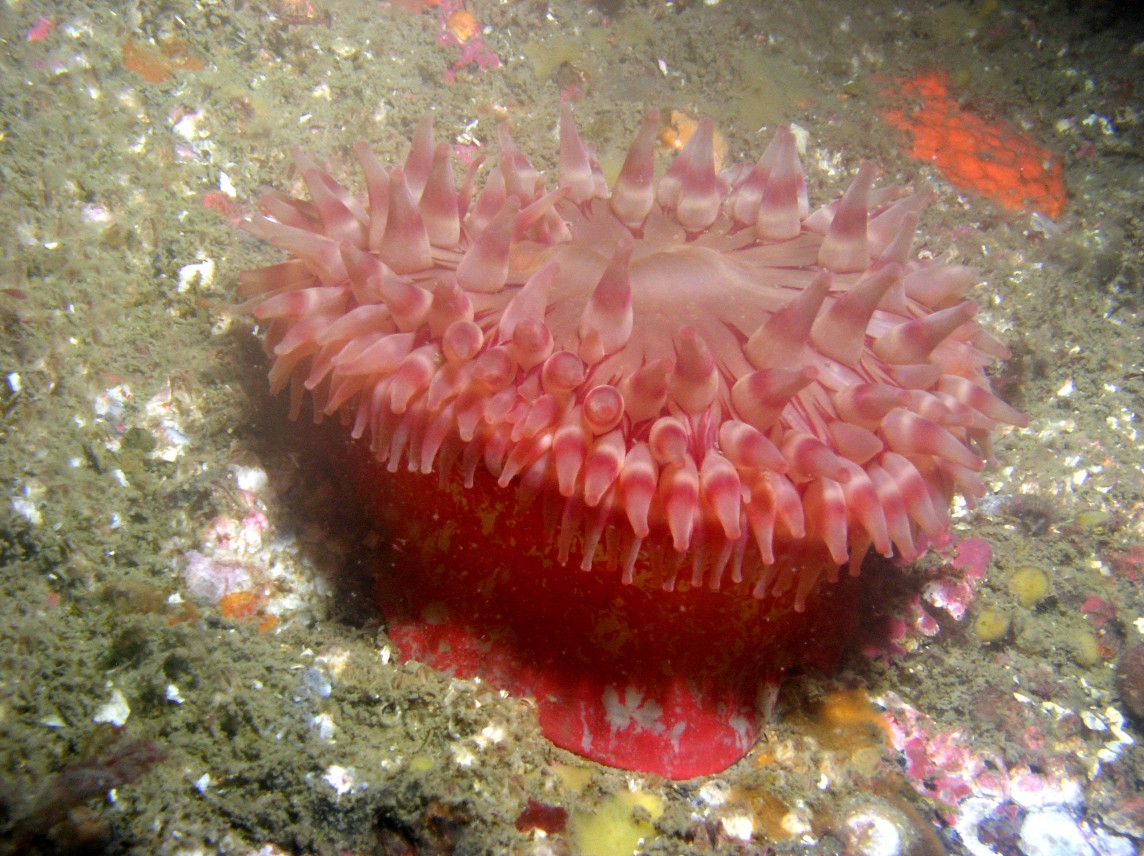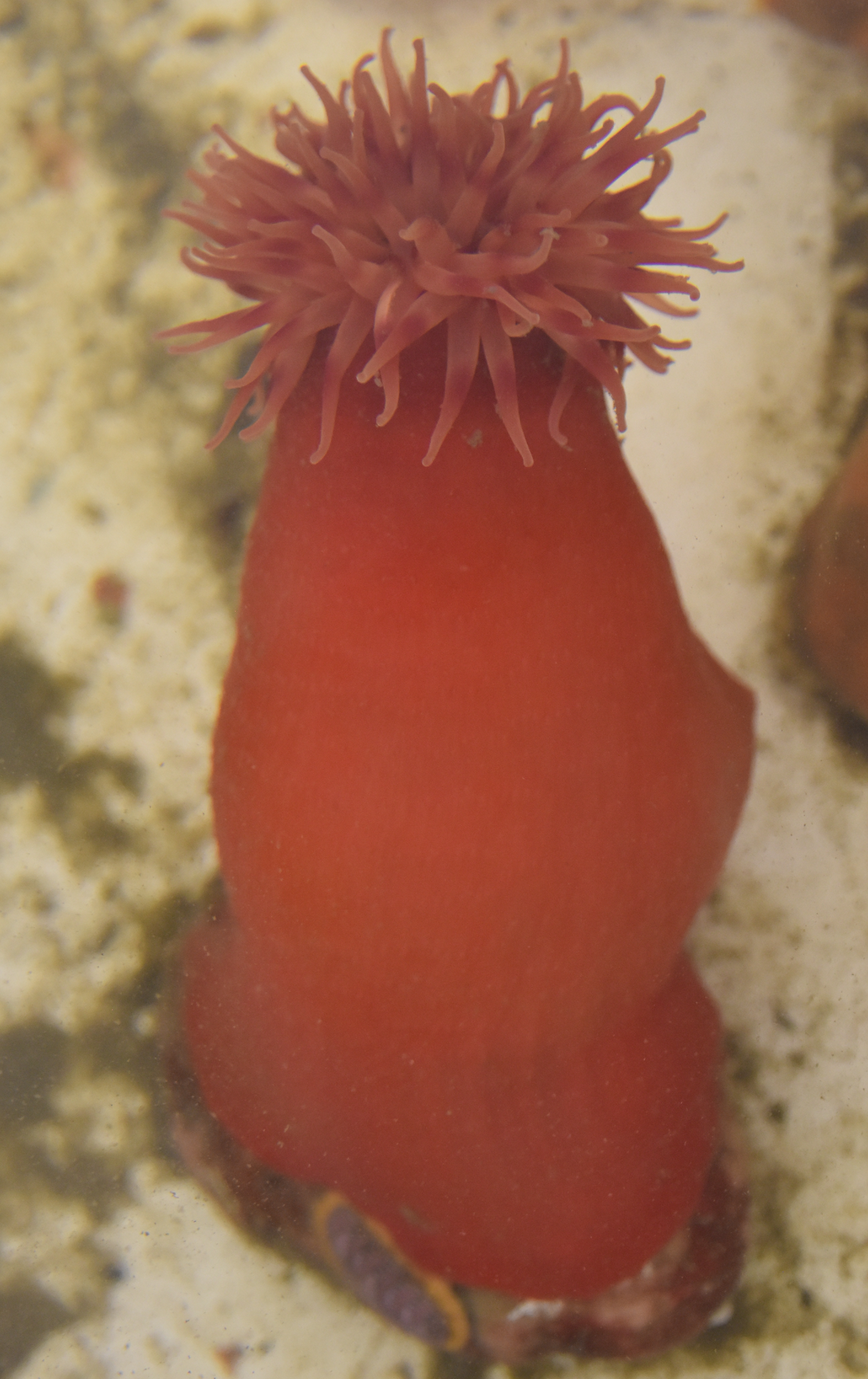Urticina crassicornis (O. F. Muller, 1776)Common name(s): Christmas anemone, Painted Urticina, Painted Tealia, Painted anemone, Red and green anemone, Northern red anemone, Dahlia anemone, Mottled anemone, Thick-petaled rose anemone (in E. N America) |
|
| Synonyms: Tealia crassicornis |  |
| Phylum Cnidaria
Class Anthozoa Subclass Zoantharia Order Actiniaria Suborder Nynantheae Family Actiniidae |
|
| Urticina crassicornis at low tide, Sares Head, WA. Diameter approximately 10 cm. | |
| (Photo by: Dave Cowles (at night, under a boulder), Sept. 2005) | |
How to Distinguish from Similar Species: This is the most common intertidal Urticina found around Rosario. Urticina piscivora has no transverse bands on the tentacles and the column is usually a solid bright red, plus it is subtidal. Several other Urticina species either have white tubercles or accumulate bits of sand, gravel, and shell on the tubercles. The most similar species, found in similar habitats, is Urticina coriacea, which has a solid red column and accumulates sand on its tubercles. Cribrinopsis fernaldi has similar colors but the bands on its tentacles are narrow and zigzag and there are radiating red lines on the oral disk.
Geographical Range: Alaska to S CA (uncommon in CA). Also in Europe and eastern Canada, Maine. Circumpolar.
Depth Range: Low intertidal to 30 m.
Habitat: Often below or hanging from the underside of boulders.
Biology/Natural History: Feeds on crabs, urchins, mussels, gastropods, chitons, barnacles, and fish. May feed on stranded jellyfish. The candy-striped shrimp Lebbeus grandimanus is a commensal, immune to the sting. Sexes are separate. In CA and the East Coast fertilization is internal, by sperm which drift in the currents. Eggs are .5 to .7 mm in diameter. The female releases the young as small but fully formed juveniles. In Puget Sound both eggs and sperm are released into the water, and the settling larvae settle preferentially on soft tubeworm tubes. Young grow to 0.3 cm diameter the first year, may mature by 1-1.5 cm diameter. Live 60-80 years. Young are seldom seen.
| Return to: | |||
| Main Page | Alphabetic Index | Systematic Index | Glossary |
References:
Dichotomous Keys:Flora and Fairbanks, 1966
Kozloff 1987, 1996
Smith and Carlton, 1975 (as Tealia crassicornis)
General References:
Brusca
and Brusca, 1978 (as Tealia crassicornis)
Gotshall,
1994
Harbo,
1999
Kozloff,
1993
McConnaughey
and McConnaughey, 1985 (as Tealia crassicornis)
Morris
et al., 1980 (as Tealia crassicornis)
Niesen,
1997
O'Clair
and O'Clair, 1998
Ricketts
et al., 1985 (as Tealia crassicornis)
Sept,
1999
Scientific Articles:
Web sites:
General Notes and Observations: Locations, abundances, unusual behaviors:
 |
 |

This individual has its mouth wide open at low tide, showing some of
the inside of the pharynx and/or mesenteries. The tentacles
are hidden
underneath the mouth tissue.

An underwater photo by Kirt Onthank, June 2007

This
all-red individual trawled from around 100 m depth in the San Juan
Channel is about 12 cm tall. Photo by Dave Cowles, July 2024
Authors and Editors of Page:
Dave Cowles (2005): Created original page